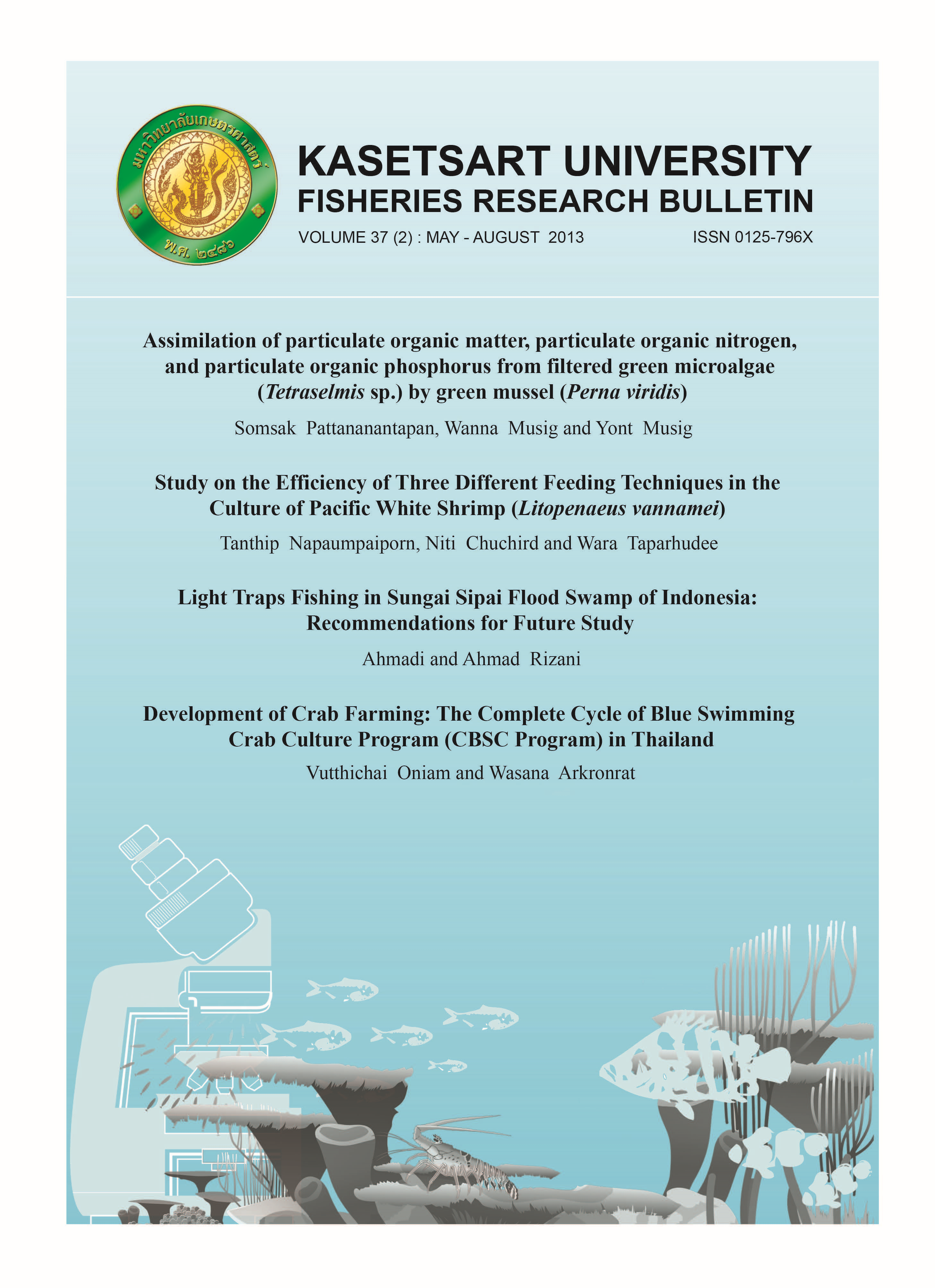Development of Crab Farming: The Complete Cycle of Blue Swimming Crab Culture Program (CBSC Program) in Thailand
Main Article Content
Abstract
The blue swimming crab, Portunus pelagicus, is a commercially important species of the tropical Indo-Pacific region which shows substantial potential as a candidate species for aquaculture. The complete cycle of blue swimming crab culture program (CBSC program) was an integrated research for development of P. pelagicus culture by Klongwan Fisheries Research Station, Faculty of Fisheries, Kasetsart University, Thailand, which began in 2008. The knowledge of CBSC program events can be used as a basis for the development of the crab aquaculture system, e.g. crab broodstock and seed production. A review of literature indicates that the hatching rate and larval quality from P. pelagicus broodstock reared in earthen ponds are comparable to those from the sea. Female crabs held in ponds for at least 120 days could be used as broodstock, a mixed feed of 50% trash fish and 50% shrimp feed No.4 was suitable for rearing crab broodstock, and the second brood of female P. pelagicus can be used for seed production. In summary, the CBSC program is an alternative option for P. pelagicus production and the development of crab farming in Thailand. The approach for development of improved crab broodstock, seed production and grow-out under CBSC program, and reducing mortality in crab are interesting points for future research.


